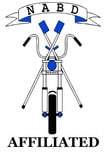ABS In Report ‘Flawed’ FIA
Posted on
The March edition of InMotion, the International magazine of the FIA – Fédération Internationale de l’Automobile – carries an article in which one of their Regions (1) is disappointed and brands as “Flawed” a report on the cost-benefit analysis of Anti-Lock Braking Systems for motorcycles.
We assume that the article refers to the Impact Assessment conducted for the Internal Market and Consumer Protection (IMCO) committee. This Impact Assessment looked at three measures contained in the European Commission’s proposal for a “Regulation on the approval and market surveillance of two- or three-wheeled vehicles and quadricycles”.
This was relevant to three compromise amendments to these measures which were submitted by MEPs to the IMCO Rapporteur, Mr van de Camp’s report in February 2012.
The FIA article appears to focus on the amendment concerning the mandatory fitting of Advanced Brake Systems (Combined Brake System (CBS) and/or Anti-lock Braking Systems (ABS)), moving the ABS introduction date forward by a year and extending Advanced Brake Systems cover to Powered Two Wheelers of more than 50cc.
At Right To Ride, we agree with the FIA comment that, “the report is disappointing as the evidence of all key stakeholders, in particular users and suppliers, has not been included.”
As previously reported, ETRA the European Twowheel Retailers’ Association also commented on the shortcomings of the Impact Assessment, stating “the Committee rejected the conclusions of the impact assessment study. (…) due to the limited amount of time to draft it and to the unclear mandate given to London Economics.”
ETRA’s press release continued with the comment, “The Conference of Presidents that followed the discussions, decided to give more time to London Economics to come up with a final and more thorough version of the study that, for instance, would take into consideration also the point of view of the parts suppliers as regards the cost of ABS.”
However, the tag line on the picture accompanying the FIA article is as follows:
“The FIA says that the EU failed to listen to suppliers such as Bosch, whose ABS 9 system is shown here.”
At Right To Ride, we wonder if this is a “veiled” promotion of one ABS manufacturer over others? The reason we wonder, is because there appears to be a comprehensive and systematic lobby by one ABS manufacturer.
Our opinion at Right To Ride is that mandatory ABS will not be the panacea that will “save” the proportion of riders lives in collisions that is being reported by various sources, because there are just too many variables when considering the cause of motorcycle collisions.
It would appear that FIA have tempered their views and recognised that ABS on its own will not automatically enhance road safety.
Read the article at Right To Ride EU



